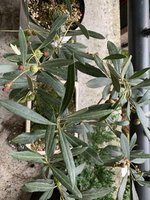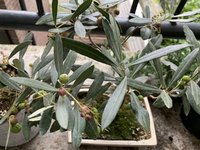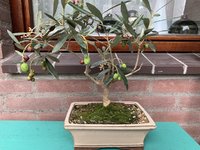Spindori
Seedling
I have obtained an olive bonsai this year and I was wondering whether and when to cut of the olives and seeds from the tree. I do not seem to find goid literature on it. For normal olive trees they do not recommend to remove the olives and the seeds as these would motivate the tree to produce more olives and seeds- and I have to admit it makes the tree look more attractive. However I think this way the energy could be taken away to build up a thicker trunk for the bonsai during winter time (I am in Europe). Also, I saw that it is recommended to prune olives in the spring time. So my question is: what do you do with your olive bonsai? When is the good time to remove olives and seeds from them? Before dormancy or after winter? Any suggestion appreciated.




